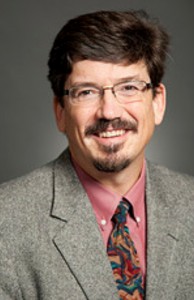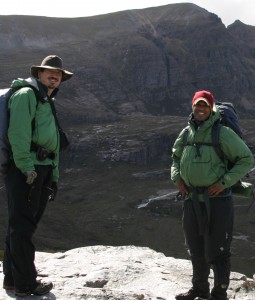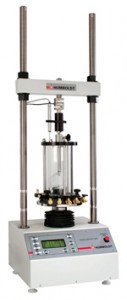Engineering & Modeling Research
Petroleum engineering is an exciting field of professionals dedicated to providing energy that powers a modern society. PGE is committed to educating the next generation of petroleum engineering leaders who will improve our quality of life.
Petroleum & Geosystems Engineering (PGE) is home to the #1 petroleum engineering graduate program and the #2 petroleum and geosystems engineering undergraduate program. The department’s tradition of excellence stems from strong curriculum, world-class faculty educators, and an unmatched research program.![]()
Energy is a key component to people’s everyday lives; and a secure energy future requires a balance between environmental impact and affordable supply. In petroleum engineering, faculty and students conduct fundamental research as well as learn to evaluate potential oil and gas reservoirs, oversee drilling activities, select and implement recovery schemes, and design surface collection and treatment facilities. Geosystems engineers and hydrogeologists are concerned with the development and use of engineering approaches in the management of water resources in addition to oil and gas, as well as environmental restoration of contamination sites and other processes related to the subsurface. Petroleum and geosystems engineers are able to address and solve important issues that will lead to energy security and thus are in high demand.
Fracture Modeling Research at The University of Texas
An essential part of our current research involves building a fully integrated geomechanical and diagenetic model that accounts for cement precipitation concurrent with fracture growth. Key collaborators on this research are Jon Olson and Rob Lander. Some initial results are reported in Olson, J. E, Laubach, S. E., and Lander, R. H., 2009, Natural fracture characterization in tight gas sandstones: Integrating mechanics and diagenesis. AAPG Bulletin, v. 93, no. 11, p. 1535-1549, but our efforts have progressed far beyond this point.
Dr. Jon E. Olson leads the reservoir geomechanics and fractured reservoir research program within the Department of Petroleum & Geosystems Engineering.
Olson is also a co-PI and founder of the Fracture Research and Application Consortium and the Structural Diagenesis Initiative.
Olson’s research focuses on fundamental issues in fracture pattern development and rock mechanics issues in the petroleum industry, most recently including hydraulic fracturing from horizontal wells and in natural fractured reservoirs (e.g., shale, tight gas sandstones), shear-enhanced permeability due to deformation in heavy oil reservoirs stimulated by steam injection, modeling production from unconventional gas and oil reservoirs, wellbore stability and reservoir compaction and subsidence.
Olson is a leader in quantitative structural geology and modelling the growth on natural fracture arrays, and the creator of the innovative fracture modeling program JOINTS. Current research includes development of a fully integrated structural diagenetic 3D code for fracture growth in chemically reactive environments.
Olson leads the Geomechanics Testing Laboratory which has capabilities for a wide range of rock property tests and experiments. The lab houses several load frames, which provide for the deformation of specimens over a range in size, geometry and load. The laboratory also conducts analog model experiments.
Olson also enjoys field work and has recently led field expeditions in Wyoming and Scotland.
Among Olson’s contributions are key developments in numerical modeling of fracture pattern development including
Olson, J. E., 2007, Fracture aperture, length and pattern geometry development under biaxial loading: a numerical study with applications to natural, cross-jointed systems. In Couples, G & Lewis, H., eds., Fracture-Like Damage and Localization, Geological Society of London, Special Publication. 289, 123-142.
Olson, Jon, 2004, Predicting fracture swarms – the influence of subcritical crack growth and the crack-tip process zone on joint spacing in rock , in Cosgrove, J.W., and Engelder, T., editors, The initiation, propagation, and arrest of joints and other fractures, Geological Society of London Special Publication 231, 73-87.
Olson, J. E., 2003, Sublinear scaling of fracture aperture versus length: An exception or the rule? Journal of Geophysical Research (American Geophysical Union), v. 108, no. B9, 2413, doi:10.1029/2001JB000419.
Olson, J. E., & Pollard, D. D., 1991, The initiation and growth of en echelon veins. Journal of Structural Geology, 13(5), 595-608.
The following papers reflect some of Olson’s current research interests:
- Hydrofracturing–modern and novel methods, Olson, J.E., and Laubach, S.E., 2014, Special Section editors, The Leading Edge, v. 33, no. 10, p. 1088, doi:10.1190/tle33101088.1
- Investigation of the impact of fracture spacing and fluid properties for interfering simultaneously or sequentially generated hydraulic fractures. Wu, K., Olson, J.E., 2013, SPE Production & Operations, v. 28, no. 4, p. 427-436.
- Examining the effect of cemented natural fractures on hydraulic fracture propagation in hydrostone block experiments. Bahorich, B., Olson, J.E., Holder, J., 2012. SPE Annual Technical Conference and Exhibition, 8-10 October 2012, San Antonio, Texas, USA, 160197-MS
- Numerical modeling of multistranded-hydraulic-fracture propagation: Accounting for the interaction between induced and natural fractures, Dahi-Taleghani A. and Olson Jon E., 2011, SPE Journal, v. 16, Issue 3, p. 575-581. doi: 10.2118/124884-PA.
- Natural fracture characterization in tight gas sandstones: Integrating mechanics and diagenesis. Olson, J. E, Laubach, S. E., and Lander, R. H., 2009, AAPG Bulletin, v. 93, no. 11, p. 1535-1549. | AAPG Notable Paper | As of July, 2014, Web of Science #1 most cited paper in AAPG Bulletin of papers published since 2009
Selected Awards and Honors
- SPE Distinguished Lecturer, 2014-2015
- AAPG Distinguished Lecturer, 2007-2008
- George H. Fancher Professorship in Petroleum Engineering
- Michel T. Halbouty ’30 Visiting Chair in Geology and Geophysics, Texas A&M University, Fall 2005.
- Anadarko Fellowship #2 in Petroleum Engineering.

Jon E. Olson
Jon Olson to Chair Department of Petroleum & Geosystems Engineering
Olson has been appointed chair of the Department of Petroleum and Geosystems Engineering (PGE) in the Cockrell School of Engineering.
On Jan. 1, 2015, Jon Olson, who currently holds the George H. Fancher Professorship in Petroleum Engineering and has spent 20 years as a faculty member at The University of Texas at Austin, will take the helm of a department that is considered one of the most prestigious petroleum engineering programs in the world, with 22 faculty members and more than 730 students.
The department’s petroleum engineering graduate and undergraduate programs are ranked No. 1 and No. 2 respectively, according to the most recent U.S. News & World Report national rankings, and entry-level salaries for its graduates are the highest among any engineering major.
Olson will remain fully engaged in the Structural Diagenesis Initiative during his term of leadership in PGE.
Read more on Olson’s appointment on the PGE web site.
Engineering students play an important role in the Initiative. For a list of recent PGE student research, see the thesis and dissertation page:




